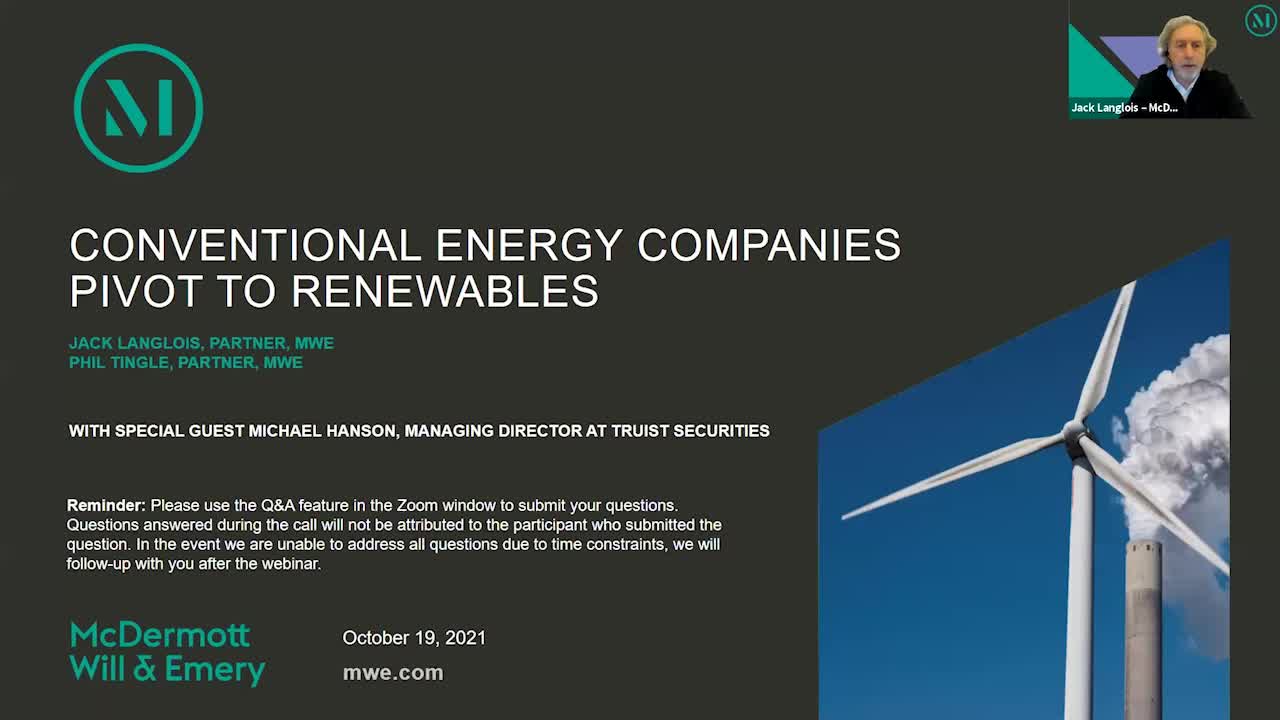Featured prominently in the Inflation Reduction Act of 2022 (IRA), carbon capture, utilization and storage (CCUS) is one segment of the energy industry that could most benefit from incentivized development. On November 17, McDermott Partners Parker Lee and Philip Tingle were joined by Laura Gieseke, senior counsel at Western Midstream, and Spencer English, director at Piper Sandler, for a discussion on the current CCUS market and how potential benefits in the IRA might play out in future CCUS development projects.

Below are key takeaways from the discussion:
1. Progress in the CCUS market requires buy-in from the oil and gas industry. This has been the case thus far given the industry’s existing technologies and desire to reduce its carbon outputs. New incentives within the IRA, such as direct pay credits, are expected to spur further investment.
2. The three primary components of CCUS are physical capture, transportation of carbon by pipeline and sequestration systems. There has been more investment and research into physical capture and transportation as those projects deal with pre-existing structures within the oil and gas industry. While direct air capture is not as popular as other carbon capture measures, the industry is devoting time to study the feasibility of such projects.
3. The IRA allows for developers to treat amounts paid in excess of their tax liability for certain tax credits as a refundable payment and receive a cash refund from the Internal Revenue Service (IRS). Specifically, Section 45Q permits both tax-exempt and non-tax-exempt entities to take advantage of this incentive for carbon oxide sequestration credits. This “direct pay” allows CCUS developers to monetize tax credits without partnering with tax equity investors and will allow for increasing the scale of CCUS projects. This provision will remain in effect until 2033. The monetization mechanism for the direct pay credits still needs to be developed and put into practice.
4. There are important questions that the IRS needs to consider during its comment period that will shape the future of the CCUS market and financing for it. For example: How is carbon sequestration defined? If an entity avoids producing CO2, does that qualify as carbon sequestration? How do we verify sequestration? How is sequestration documented?
5. Tax equity investors have a good sense of potential risks for wind and solar projects, but there is a desire to diversify into different technologies. While direct pay will permit the oil and gas industry to proceed with CCUS projects without tax equity partners, the industry expects tax equity partners to join down the road to allow for maximum utilization of the available tax credits.
To access past webinars in the Navigating the New Energy Landscape series and to begin receiving Energy updates, including invitations to the webinar series, please click here.
read more

 Subscribe
Subscribe



